Ocean Facts
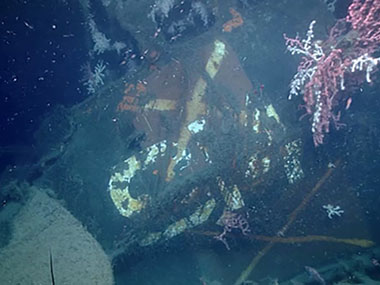
Maritime heritage is the legacy of human interactions with Earth’s large water bodies and their coasts throughout time.
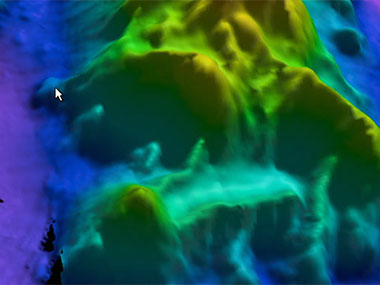
Mapping watchstanders act as sentries and data keepers while collecting, processing, and documenting high-quality ocean and seafloor data captured by sonar and oceanographic instruments.
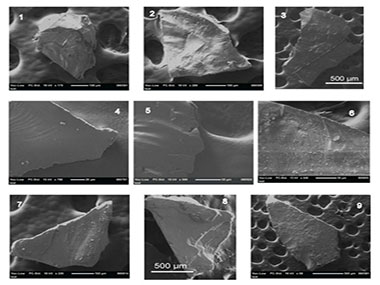
Microdebitage refers to small fragments, less than one millimeter in size, produced when stone tools are created. These fragments can help archaeologists identify areas where stone tools were made, which in turn can help to locate archaeological sites in areas that could not be excavated by traditional methods, including underwater sites.

Mapping watchstanders act as sentries and data keepers while collecting, processing, and documenting high-quality ocean and seafloor data captured by sonar and oceanographic instruments.
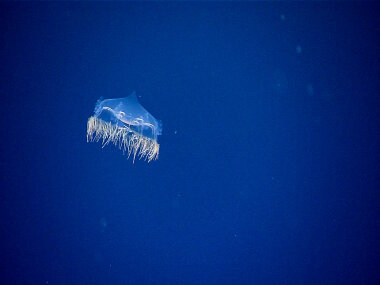
Oxygen minimum zones are persistent layers in the water column that have low oxygen concentration due to biological, chemical, and physical processes.
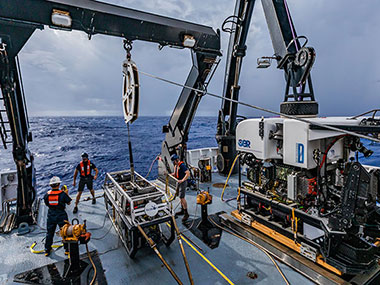
A shakedown is an expedition that tests a ship’s mission systems and equipment before a field season.

The deep scattering layer (or DSL) is a region in the water column where there is a high density of marine organisms that reflect sound.
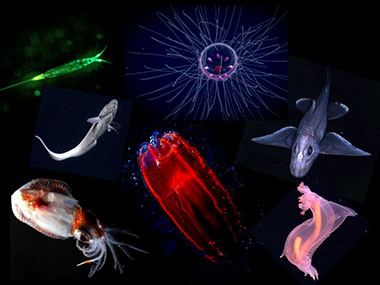
The deep scattering layer (or DSL) is a region in the water column where there is a high density of marine organisms that reflect sound.
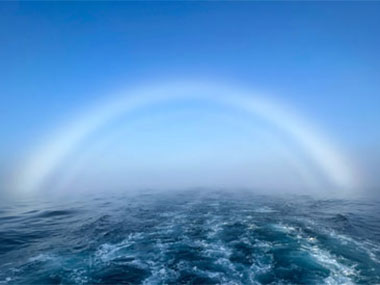
The high seas are defined by international law as all parts of the ocean that aren't included in the exclusive economic zone, the territorial sea, or the internal waters of a country, or in the archipelagic waters of an archipelagic country.
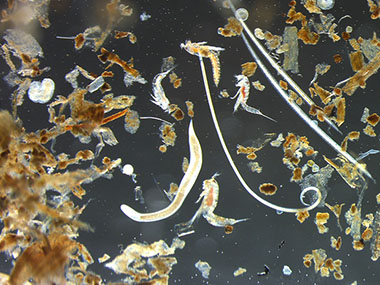
Marine meiofauna are a group of animals small enough to live in between the grains of sand and mud on the seafloor.
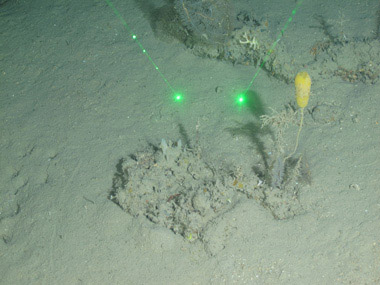
Sponges are ancient animals that may appear simplistic, but the more we study them, the more we realize how complex they are. They are bizarre and beautiful – nothing like the yellow, plastic rectangle next to your kitchen sink.
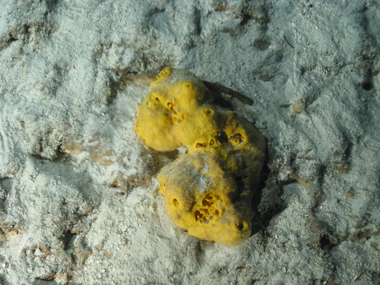
A "natural product" is a chemical compound or substance made by a living organism.
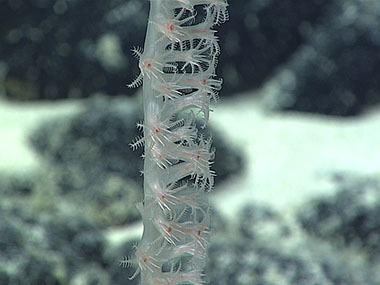
Tiny, microskeletal structures embedded in an octocoral's soft tissue that provide the animal support and protection.
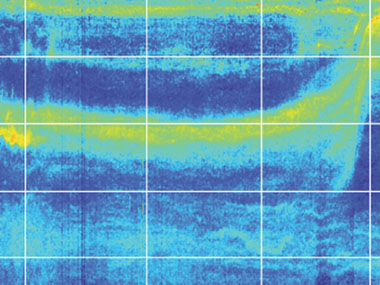
The Earth’s greatest migration and a major influencer on ocean and planetary systems.
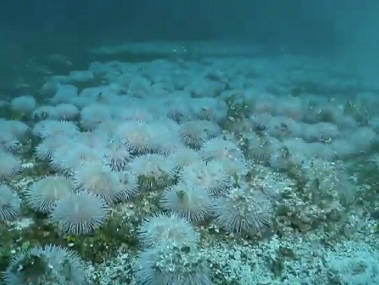
Habitat connectivity refers to how and to what degree distinct patches of habitat are connected, which can influence the distribution, genetic diversity, and health of animal and plant populations.
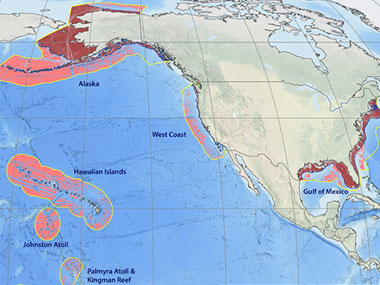
An “exclusive economic zone,” or “EEZ” is an area of the ocean, generally extending 200 nautical miles (230 miles) beyond a nation's territorial sea, within which a coastal nation has jurisdiction over both living and nonliving resources.
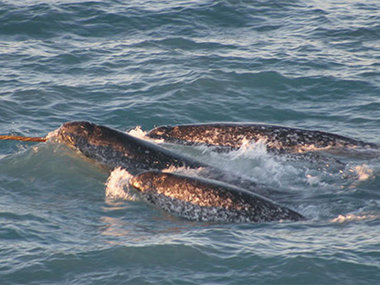
A narwhal is a medium-sized, toothed whale that is only found in Arctic waters.
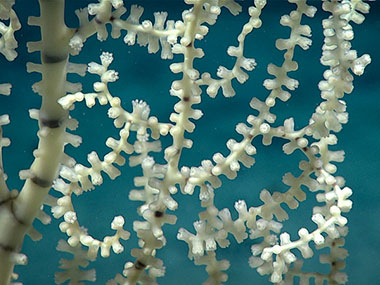
Corals are animals.

With structure for animals to settle and live on and currents supplying food and nutrients, the variety of life, or biodiversity, at seamounts is often rather high.
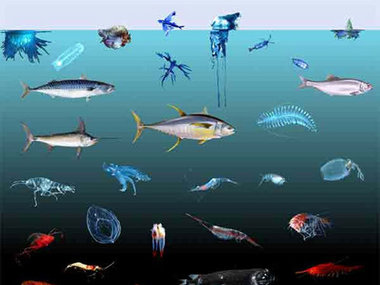
The coloration of animals in the ocean follows a surprisingly regular pattern by depth, most likely tied to how light pentrates ocean water and an animal's ability to blend in with its surroundings.
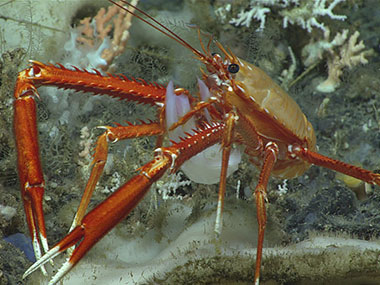
Squat lobsters look like lobsters, but they are actually more closely related to hermit crabs.
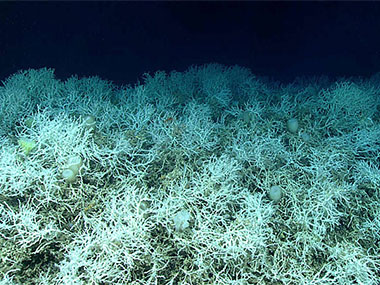
Not all corals live in warm water -- in fact, over half of all known coral species are found in cold, deep, and dark waters.
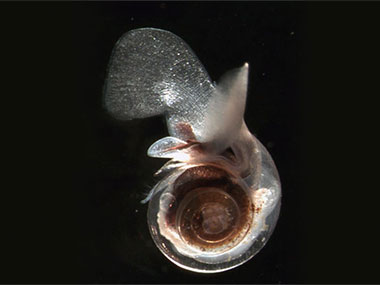
Ocean acidification refers to a reduction in the pH of ocean water, caused primarily by uptake of carbon dioxide from the atmosphere, but also by other chemical additions or subtractions from the ocean.
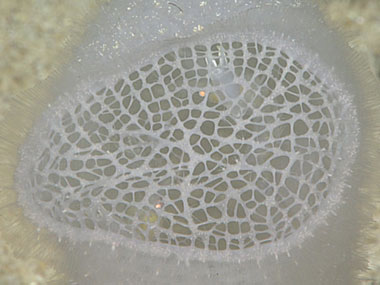
Glass sponges have skeletons made of silica, which is the same material used to make glass, but glass sponges are not glass, per se.
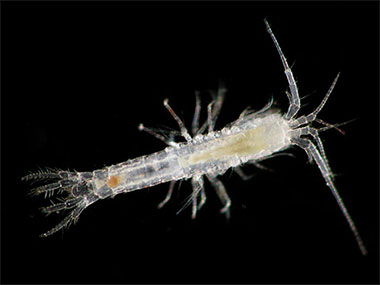
Animals living only in marine caves have adapted to environments with low light and often low levels of oxygen.
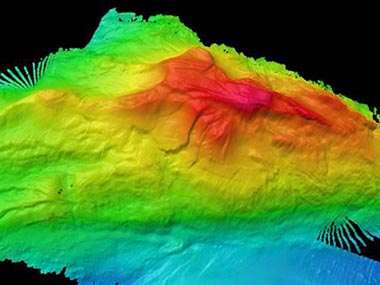
Hydrography is the science of measuring and describing the physical features of bodies of water.
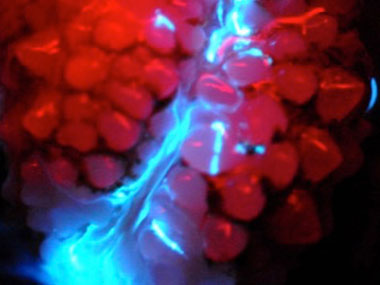
Living organisms may produce their own light via the processes of bioluminescence, fluorescence, or phosphorescence.
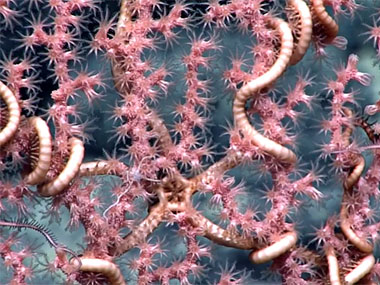
Symbiosis is the interaction between two different organisms living in close physical association.
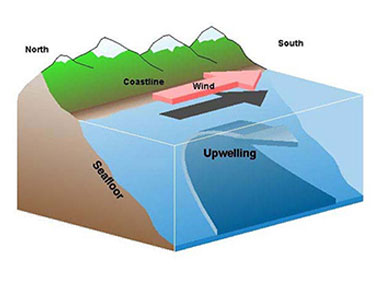
Upwelling occurs when winds push surface water away from the shore and deeper water rises to fill the gap.
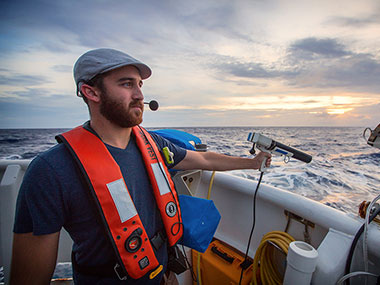
An Expendable Bathythermograph (XBT) is a probe used to measure temperature throughout the water column.
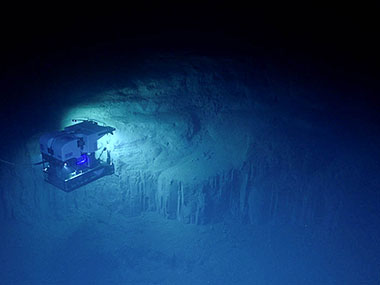
The average depth of the ocean is 3,682 meters, or 12,080 feet.
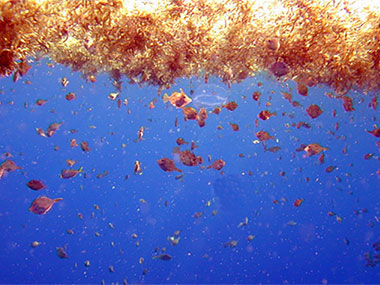
Sargassum is a genus of large brown seaweed (a type of algae) that floats in island-like masses and never attaches to the seafloor.
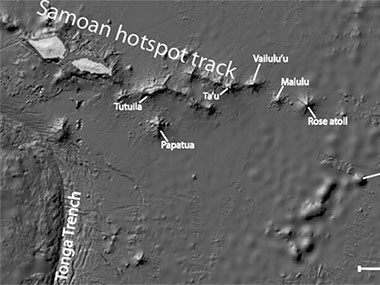
In geology, a hotspot is an area of the Earth’s mantle from which hot plumes rise upward, forming volcanoes on the overlying crust.
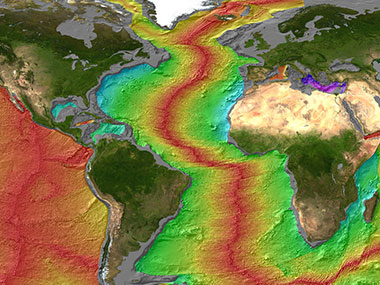
The mid-ocean ridge is the most extensive chain of mountains on Earth, stretching nearly 65,000 kilometers (40,390 miles) and with more than 90 percent of the mountain range lying in the deep ocean.
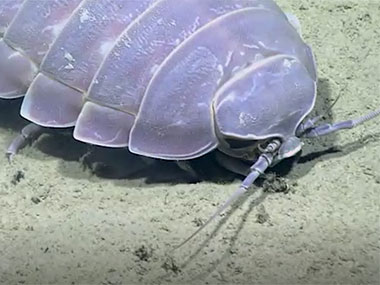
Isopods are an order of marine invertebrates (animals without backbones) that belong to the greater crustacean group of animals, which includes crabs and shrimp.

Red light does not reach ocean depths, so deep-sea animals that are red actually appear black and thus are less visible to predators and prey.
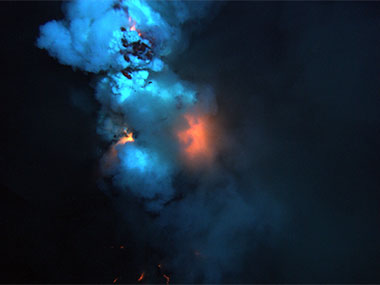
Deep ocean trenches, volcanoes, island arcs, submarine mountain ranges, and fault lines are examples of features that can form along plate tectonic boundaries.
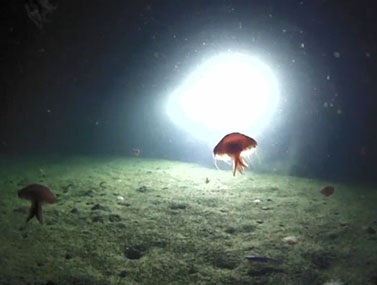
Exploration is key to increasing our understanding of the ocean, so we can more effectively manage, conserve, regulate, and use ocean resources that are vital to our economy and to all of our lives.
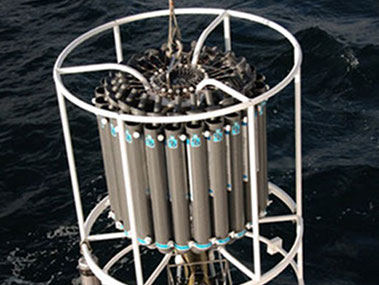
CTD stands for conductivity, temperature, and depth, and refers to a package of electronic instruments that measure these properties.
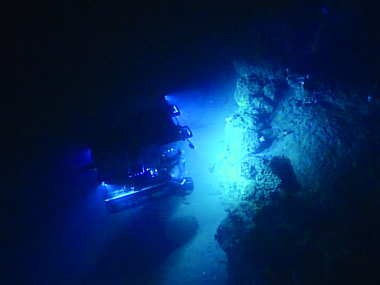
A marine protected area is a defined region designated and managed for the long-term conservation of marine resources, ecosystems services, or cultural heritage.
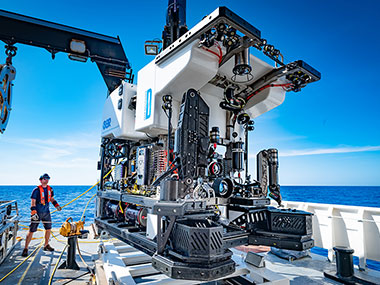
“ROV” stands for remotely operated vehicle; ROVs are unoccupied, highly maneuverable underwater machines operated by someone at the water surface.
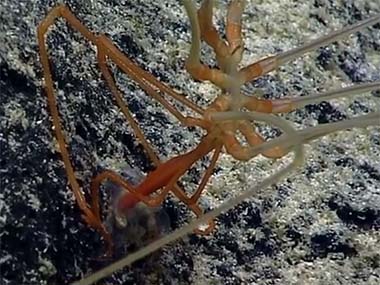
Sea spiders are not actually spiders.
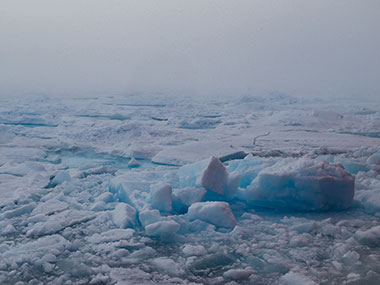
The Arctic Ocean, with a total area of about 14 million square kilometers (5.4 million square miles), is the world’s smallest ocean basin.
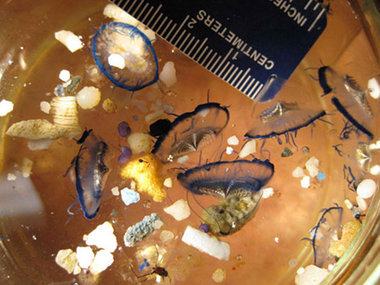
The 'Great Pacific Garbage Patch' is the popular name for an area in the North Pacific Ocean, between Hawaii and California, containing a high concentration of marine debris.
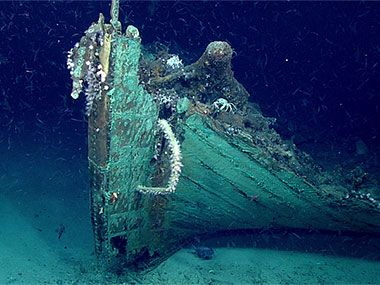
Studying shipwrecks can help us understand the past, connect us to our cultural heritage, and teach us lessons on how the environment and human error can impact each other.
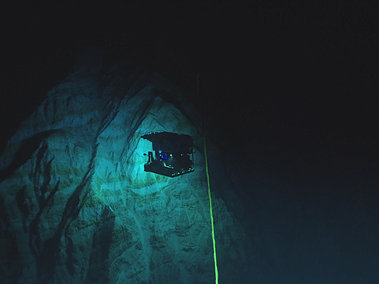
The deep ocean is generally defined as the depth at which light begins to dwindle, typically around 200 meters (656 feet).
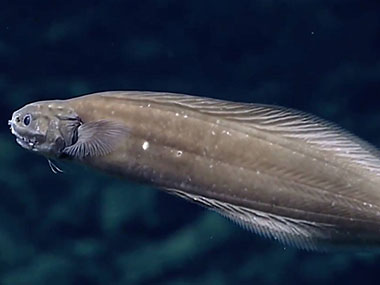
Light in the ocean decreases with depth, with minimal light penetrating between 200-1,000 meters (656-3,280 feet) and depths below 1,000 meters receiving no light from the surface.
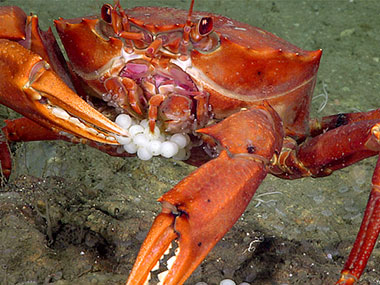
Organisms living in the deep ocean must be adapted to survive under extreme pressure, limited light, cold temperatures, and other factors.
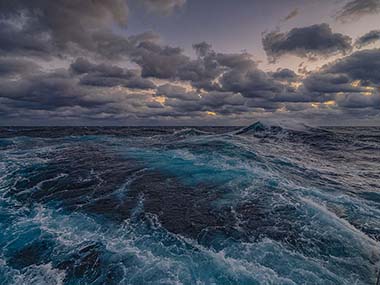
Scientifically, El Niño refers to unusual sea surface temperatures throughout the equatorial Pacific that result in worldwide weather effects.
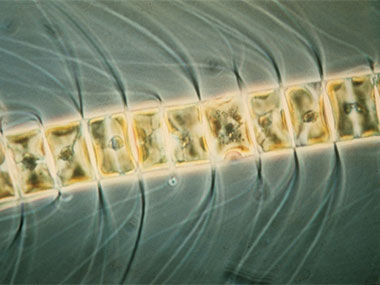
Marine organisms produce over half of the oxygen that land animals currently need to breathe.
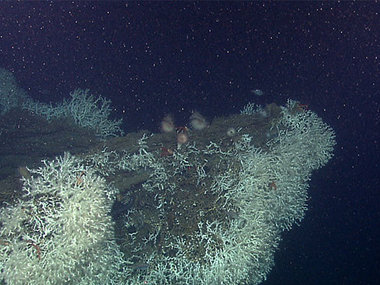
Marine snow is mostly biological debris that originates from the top layers of the ocean and drifts to the seafloor, providing a primary source of energy for animals in the deep ocean.
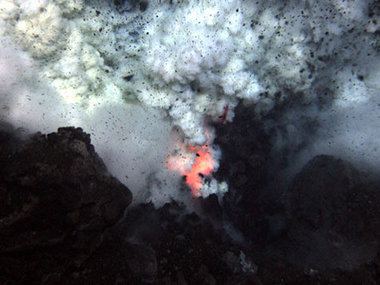
The “Ring of Fire” is a string of underwater volcanoes and earthquake sites around the edges of the Pacific Ocean.
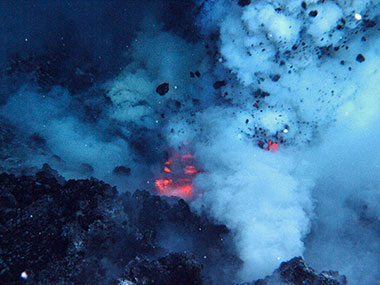
Underwater volcanic activity is a constant process that shapes the features of the ocean.
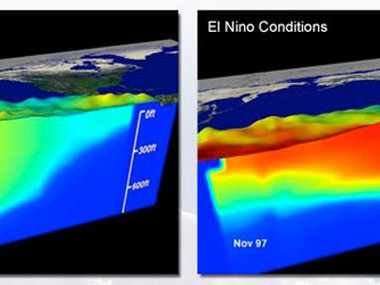
Scientifically, El Niño refers to unusual sea surface temperatures throughout the equatorial Pacific that result in worldwide weather effects.
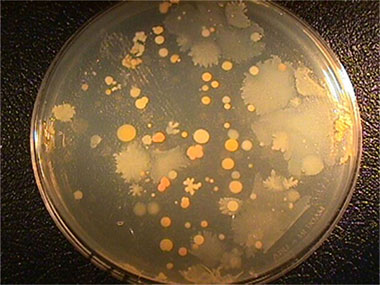
Marine microbes are tiny, single-celled organisms that live in the ocean and account for more than 98 percent of ocean biomass.
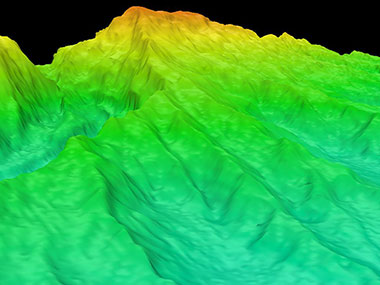
Topographic maps show elevation of landforms above sea level; bathymetric maps show depths of landforms below sea level.
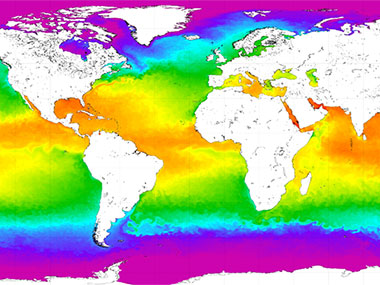
The ocean influences weather and climate by storing solar radiation, distributing heat and moisture around the globe, and driving weather systems.
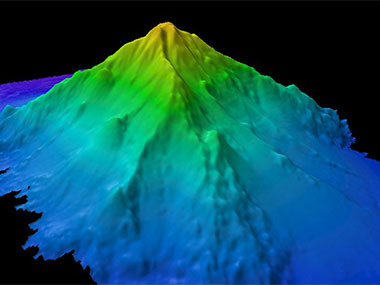
A seamounts is an underwater mountain with steep sides rising from the seafloor.
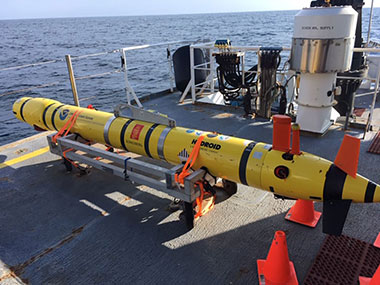
'AUV' stands for autonomous underwater vehicle; they are unmanned, untethered vehicles used to conduct underwater research.
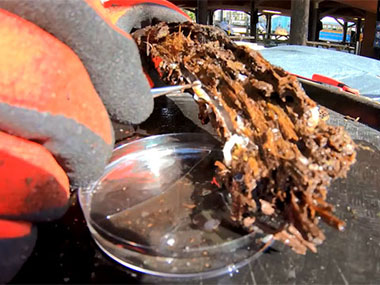
Yes; while most drugs derived from natural sources currently come from terrestrial (land-based) organisms, research suggests that the ocean, with its amazing biodiversity and large number of yet-undiscovered species, may be a rich source for new medicines.
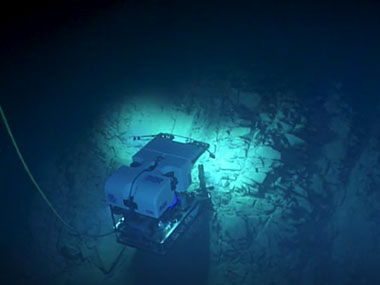
The temperature of ocean water varies by latitude and by depth.
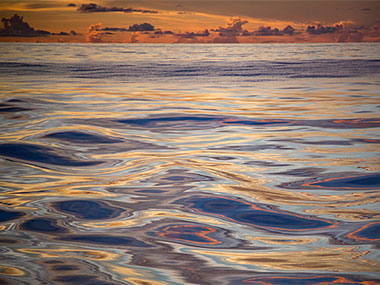
The Pacific Ocean is the largest and deepest ocean basin on Earth, covering more than 60 million square miles (155 million square kilometers) and averaging a depth of 13,000 feet (4,000 meters).
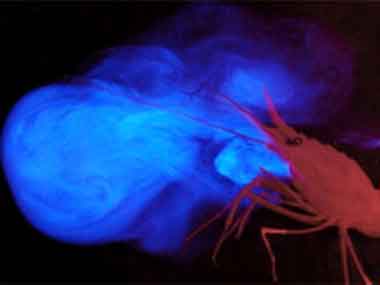
Bioluminescence is light produced by an organism using a chemical reaction.
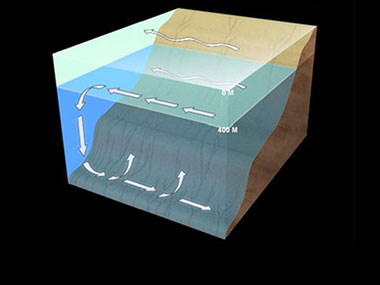
Ocean currents can be caused by wind, density differences in water masses caused by temperature and salinity variations, gravity, and events such as earthquakes or storms.
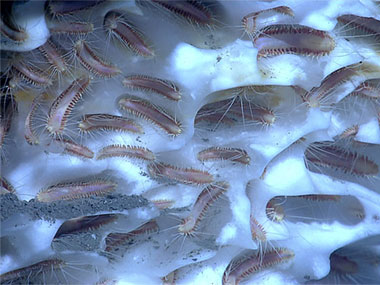
Gas hydrates are ice-like substances that form in deep-sea sediments.
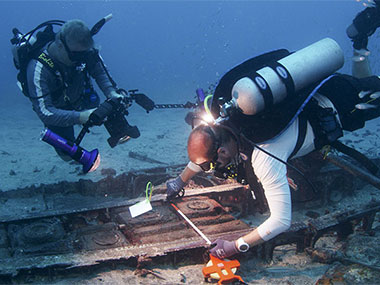
The tools used to locate underwater archaeological sites are essentially the same tools used to explore the seafloor.
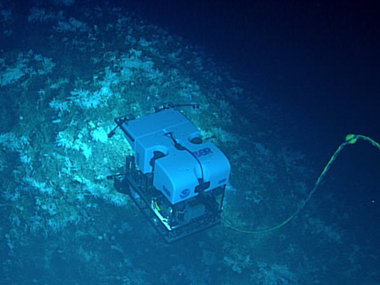
Disturbances such as waves caused by strong hurricane winds do not reach the deep ocean; however, churning of surface waters can result in more food falling to the seafloor
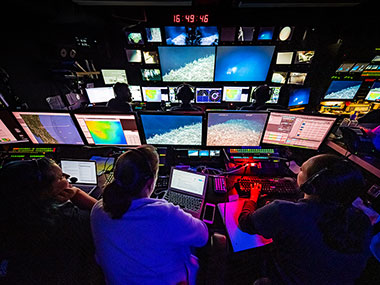
NOAA uses “telepresence” technology to deliver data and video in real time from ships such as NOAA Ship Okeanos Explorer to scientists, teachers, students, and members of the general public on shore.
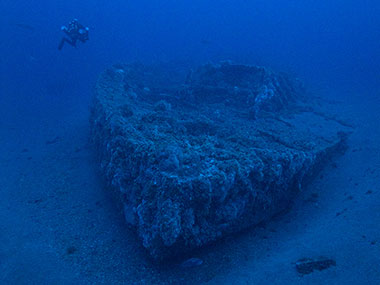
The USS Monitor was the Union Navy's first ironclad warship during the American Civil War; it sunk in 1862 off the coast of North Carolina and became the site of our nation's first national marine sanctuary in 1975.
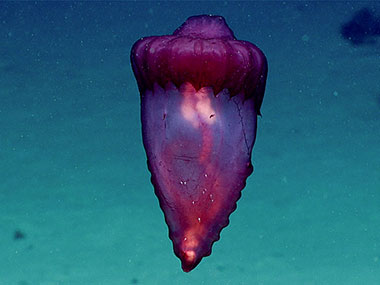
The impacts of pressure at ocean depth are less for organisms lacking gas-filled spaces like lungs or swim bladders.
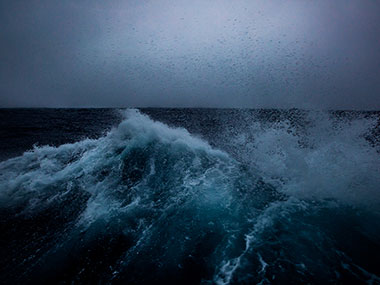
Waves are caused by energy passing through the water, causing the water to move in a circular motion.
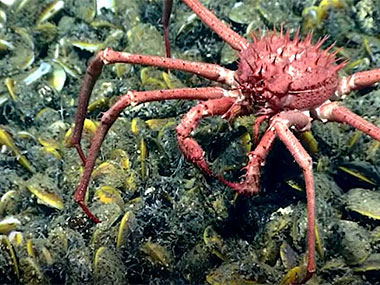
Photosynthesis and chemosynthesis are both processes by which organisms produce food; photosynthesis is powered by sunlight while chemosynthesis runs on chemical energy.
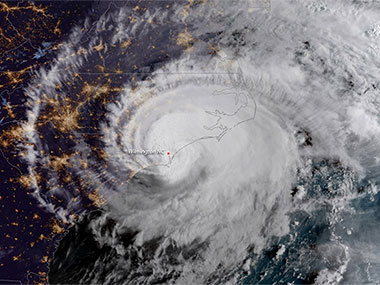
Hurricanes form over tropical oceans, where warm water and air interact to create these storms.
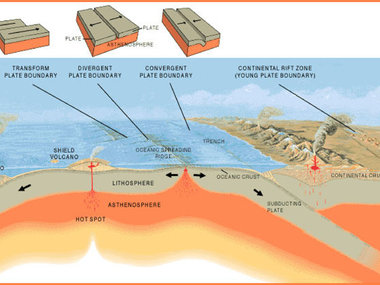
There are three kinds of plate tectonic boundaries: divergent, convergent, and transform plate boundaries.
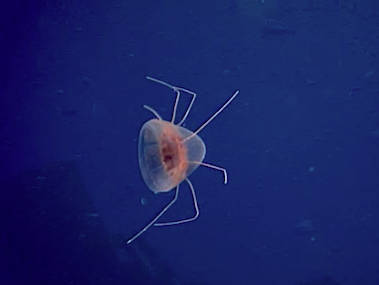
The water column is the largest, yet one of the most underexplored, habitats on the planet; we explore it to better understand the ocean as a whole, including the huge biomass that lives there and its importance to the global carbon and other biogeochemical cycles.
